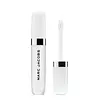Marc Jacobs Beauty Re(cover) Hydrating Coconut Lip Oil Versus H&M (Hennes & Mauritz) Flavoured Lip Oil
What's inside
What's inside
 Key Ingredients
Key Ingredients

 Benefits
Benefits

 Concerns
Concerns

 Ingredients Side-by-side
Ingredients Side-by-side

Hydrogenated Polyisobutene
EmollientPolybutene
Ethylhexyl Palmitate
EmollientHydrogenated Styrene/Isoprene Copolymer
Phenoxyethanol
PreservativeParfum
MaskingEthylhexylglycerin
Skin ConditioningCarthamus Tinctorius Seed Oil
MaskingCaryodendron Orinocense Seed Oil
EmollientNylon-12
Cocos Nucifera Fruit Extract
EmollientCocos Nucifera Fruit Juice
EmollientCocos Nucifera Water
MaskingCoconut Alkanes
EmollientTocopherol
AntioxidantAloe Barbadensis Leaf Extract
EmollientChamomilla Recutita Flower Extract
MaskingCoco-Caprylate/Caprate
EmollientLeuconostoc/Radish Root Ferment Filtrate
AntimicrobialCitric Acid
BufferingWater
Skin ConditioningSodium Benzoate
MaskingPotassium Sorbate
PreservativeTocopheryl Acetate
AntioxidantLinalool
PerfumingHydrogenated Polyisobutene, Polybutene, Ethylhexyl Palmitate, Hydrogenated Styrene/Isoprene Copolymer, Phenoxyethanol, Parfum, Ethylhexylglycerin, Carthamus Tinctorius Seed Oil, Caryodendron Orinocense Seed Oil, Nylon-12, Cocos Nucifera Fruit Extract, Cocos Nucifera Fruit Juice, Cocos Nucifera Water, Coconut Alkanes, Tocopherol, Aloe Barbadensis Leaf Extract, Chamomilla Recutita Flower Extract, Coco-Caprylate/Caprate, Leuconostoc/Radish Root Ferment Filtrate, Citric Acid, Water, Sodium Benzoate, Potassium Sorbate, Tocopheryl Acetate, Linalool
Ingredients Explained
These ingredients are found in both products.
Ingredients higher up in an ingredient list are typically present in a larger amount.
Ethylhexylglycerin (we can't pronounce this either) is commonly used as a preservative and skin softener. It is derived from glyceryl.
You might see Ethylhexylglycerin often paired with other preservatives such as phenoxyethanol. Ethylhexylglycerin has been found to increase the effectiveness of these other preservatives.
Hydrogenated Polyisobutene is a synthetic polymer. Polymers are compounds with high molecular weight. Hydrogenated Polyisobutene is an emollient and texture enhancer.
In one study, Hydrogenated Polyisobutene showed better skin hydration levels than Caprylic/Capric Triglyceride. As an emollient, it helps keep your skin soft and hydrated by trapping moisture in.
Hydrogenated Polyisobutene is often used as a mineral oil replacement.
Learn more about Hydrogenated PolyisobuteneWe don't have a description for Hydrogenated Styrene/Isoprene Copolymer yet.
Linalool is a fragrance and helps add scent to products. It's derived from common plants such as cinnamon, mint, citrus, and lavender.
Like Limonene, this ingredient oxidizes when exposed to air. Oxidized linalool can cause allergies and skin sensitivity.
This ingredient has a scent that is floral, spicy tropical, and citrus-like.
Learn more about LinaloolParfum is a catch-all term for an ingredient or more that is used to give a scent to products.
Also called "fragrance", this ingredient can be a blend of hundreds of chemicals or plant oils. This means every product with "fragrance" or "parfum" in the ingredients list is a different mixture.
For instance, Habanolide is a proprietary trade name for a specific aroma chemical. When used as a fragrance ingredient in cosmetics, most aroma chemicals fall under the broad labeling category of “FRAGRANCE” or “PARFUM” according to EU and US regulations.
The term 'parfum' or 'fragrance' is not regulated in many countries. In many cases, it is up to the brand to define this term.
For instance, many brands choose to label themselves as "fragrance-free" because they are not using synthetic fragrances. However, their products may still contain ingredients such as essential oils that are considered a fragrance by INCI standards.
One example is Calendula flower extract. Calendula is an essential oil that still imparts a scent or 'fragrance'.
Depending on the blend, the ingredients in the mixture can cause allergies and sensitivities on the skin. Some ingredients that are known EU allergens include linalool and citronellol.
Parfum can also be used to mask or cover an unpleasant scent.
The bottom line is: not all fragrances/parfum/ingredients are created equally. If you are worried about fragrances, we recommend taking a closer look at an ingredient. And of course, we always recommend speaking with a professional.
Learn more about ParfumPhenoxyethanol is a preservative that has germicide, antimicrobial, and aromatic properties. Studies show that phenoxyethanol can prevent microbial growth. By itself, it has a scent that is similar to that of a rose.
It's often used in formulations along with Caprylyl Glycol to preserve the shelf life of products.
Polybutene is used to help control the viscosity of a product. This just means it helps adjusts the texture.
It is a polymer and does not get absorbed into the skin due to its large size.
Studies found this ingredient did not irritate skin in concentrations below 15%.
Learn more about PolybuteneTocopherol (also known as Vitamin E) is a common antioxidant used to help protect the skin from free-radicals and strengthen the skin barrier. It's also fat soluble - this means our skin is great at absorbing it.
Vitamin E also helps keep your natural skin lipids healthy. Your lipid skin barrier naturally consists of lipids, ceramides, and fatty acids. Vitamin E offers extra protection for your skin’s lipid barrier, keeping your skin healthy and nourished.
Another benefit is a bit of UV protection. Vitamin E helps reduce the damage caused by UVB rays. (It should not replace your sunscreen). Combining it with Vitamin C can decrease sunburned cells and hyperpigmentation after UV exposure.
You might have noticed Vitamin E + C often paired together. This is because it is great at stabilizing Vitamin C. Using the two together helps increase the effectiveness of both ingredients.
There are often claims that Vitamin E can reduce/prevent scarring, but these claims haven't been confirmed by scientific research.
Learn more about Tocopherol